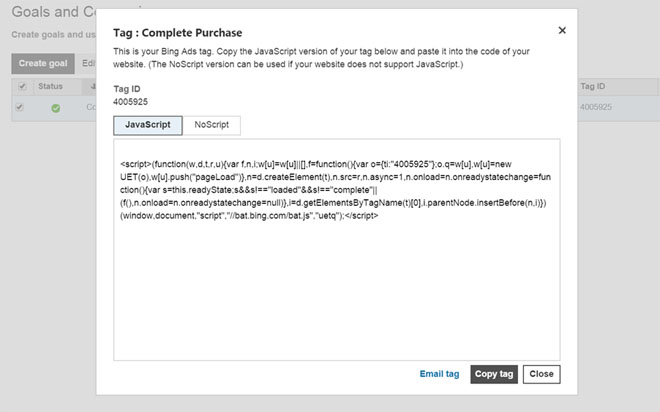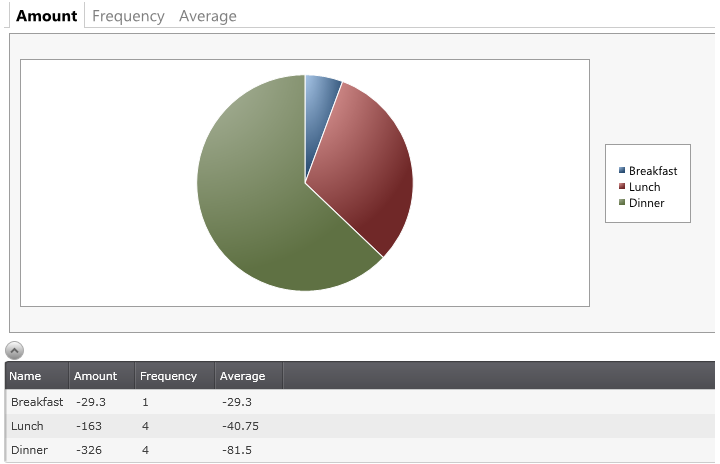
- Summing the amounts of the franchise tags for players at that position for the five preceding league years
- Dividing the resulting amount by the sum of the salary caps for the five preceding league years
- Multiplying the resulting percentage by the salary cap for the upcoming league year
How do you calculate a player's franchise tag?
This figure is calculated by dividing the amount equal to the sum of the franchise tag figures at a player's position over the last five seasons by the sum of the salary caps from the last five seasons. Finally, that figure is multiplied by the current year's salary cap. Option 2: 120% of his PYS minus performance incentives.
What percentage of the salary cap is the franchise tag?
For example, let’s say the sum of the franchise tag for a position in the last five years was $50 million and the sum of the salary caps in that time was $250 million. The league would then divide $50 million by $250 million to get 0.2. Therefore, that franchise tag number would be 20% of the salary cap for the new year.
How do franchise tags work in the NFL?
One thing that comes into play when it comes to a franchise tag is the player's salary from the year before. This is called the Prior Year Salary (PYS), which consists of base salary, roster and reporting bonuses, prorated signing bonus and other payments to players for playing in the NFL from the year before.
How much would a 2nd franchise tag cost?
The second tag would see the cost jump to $24 million a year. If there is a third tag on the player, his salary in that year would be $34.56 million. What we do know for sure about the franchise tag is that the deadline for teams to apply it is 4 PM ET on March 8.

How does a franchise tag work in the NFL?
In basic terms, the franchise tag can be explained as follows: it is a fully guaranteed one-year contract teams use to keep one of their unrestricted free agents from hitting the open market. Ideally, the use of the tag buys a club more time to reach a long-term contract with its franchise player.
What is the franchise tag amount?
It means a team will pay the tagged player no less than the average of the five highest salaries at the player's position over the last five years, or 120 percent of the player's cap number from the previous season, whichever is greater.
How much is the franchise tag for QB 2022?
$29.703 millionThe following are the figures for non-exclusive franchise tags in 2022:PositionFranchise tag figureQuarterback$29.703 millionRunning back$9.570 millionWide receiver$18.419 millionTight end$10.931 million7 more rows•Mar 7, 2022
Can you franchise tag a player 3 times?
Consecutive franchise tags are allowed; however, for a player to be tagged in two straight years, the team must pay 120 percent of the player's previous salary.
Can a NFL player refuse a franchise tag?
Can a player refuse a franchise tag? The tag is unpopular among some players who hope to get a large contract right away. Players don't have the official option to refuse, but some have resisted the tag in the past by refusing to sign and missing offseason training and the season.
Does the franchise tag count against the cap?
Franchise or Transition Tag – any player who receives the Franchise or Transition Tag (other than the Exclusive Franchise Tag) is still technically a Free Agent, but is restricted by the Tag. A player under the Tag does count against the Salary Cap, at the amount of the Franchise or Transition Tag tender amount.
How much is franchise tag for QB 2023?
An exclusive franchise tag for Lamar Jackson in 2023 currently calculates to $45.4M (thanks in large part to Deshaun Watson's $55M cap hit). A tag in 2024 would then be $54.4M.
How much is a franchise tag for WR?
2023 Projected Franchise and Transition TendersPositionFranchise TagTransition TagQB$31,497,000$28,049,000DE$20,167,000$16,498,000WR$19,881,000$17,465,000CB$18,687,000$16,026,0007 more rows
Who is the highest-paid QB in the NFL?
Highest-paid NFL Quarterbacks of 2022Matthew Stafford (Rams): $61,500,000.Russell Wilson (Broncos): $57,000,000.Josh Allen (Bills): $46,961,405.Deshaun Watson (Browns): $46,000,000.Aaron Rodgers (Packers): $42,000,000.Kirk Cousins (Vikings): $40,000,000.t-7. Tom Brady (Buccaneers): $30,000,000.t-7.More items...
Was davante Adams franchise tag?
The NFL announced Monday that the 2022 franchise tag number for wide receivers -- the amount the Packers would be required to offer Adams in a one-year deal -- was $18.419 million.
How many years can a team franchise tag a player?
one-yearThere's sometimes more to the story. For nearly the past 30 seasons, NFL owners have reserved the right to claim one player as their own for a one-year, hefty contract through what is known as the franchise tag.
Can NFL players refuse to be traded?
A player may veto the trade for any reason, unless the provision specifically says otherwise.
How much is franchise tag for QB 2023?
An exclusive franchise tag for Lamar Jackson in 2023 currently calculates to $45.4M (thanks in large part to Deshaun Watson's $55M cap hit). A tag in 2024 would then be $54.4M.
What does franchise player mean 2k22?
In professional sports, a franchise player is an athlete who is both the best player on their team and one that the team can build their "franchise" around for the foreseeable future.
Why does the franchise tag exist?
The franchise tag is a designation NFL teams can apply to one of their upcoming unrestricted free agents per year. Using the franchise tag allows the team to prevent that player from hitting free agency in the new league year.
How much is quarterback franchise tag?
2022 NFL franchise tag numbersPositionNon-exclusive franchise tagTransition tagPositionNon-exclusive franchise tagTransition tagQuarterback$29.703 million$27.186 millionLinebacker$18.702 million$15.783 millionWide receiver$18.419 million$16.782 million8 more rows•Mar 8, 2022
What is the PYS tag?
One thing that comes into play when it comes to a franchise tag is the player's salary from the year before. This is called the Prior Year Salary (PYS), which consists of base salary, roster and reporting bonuses, prorated signing bonus and other payments to players for playing in the NFL from the year before.
What happens when you get a non-exclusive NFL tag?
When an NFL player receives a non-exclusive franchise tag, they are free to negotiate with any NFL franchise. The non-exclusive franchise tag is broken down into two separate options. An NFL player will receive a one-year deal with a salary greater than these two options:
Why do NFL teams use franchise tags?
The NFL franchise tag is made to help teams limit the mobility of a player that is expected to hit the free agency market. NFL teams have the opportunity to use the franchise tag on both, restricted and unrestricted free agents. According to the new NFL Collective Bargaining Agreement (CBA) between the league and the National Football League ...
What are the different types of NFL franchise tags?
There is a non-exclusive, exclusive, and a transition tag. All three types of franchise tags can be pulled off the table at any time before it is signed by a player.
How long does a team have to match a non-exclusive franchise tag?
If the player that has a non-exclusive franchise tag agrees to an offer from another team, then their current team has five days to match that offer. If the original team decides not to match the offer then they will receive a compensation draft package that is equivalent to two first-round picks.
How long does it take for a player to match a draft offer?
If a player agrees to a deal with another NFL team, their current team has five days to match the offer. The kicker to the transition tag is that if the original team refuses to match the other team's offer, no draft compensation comes their way.
What is Option 2?
Option 2: The amount of the non-exclusive franchise tag.
How does the NFL calculate the franchise tag?
The NFL starts by calculating a "franchise tag" amount for each of the prior five years. The franchise tag amount is the average of the top five salaries at each position for each year. Then the NFL adds up the last five franchise tag amounts and divides them by the prior five total salary-cap amounts.
What does the franchise tag mean?
Ultimately, the franchise tag is a means to an end. For every player and team, the franchise tag could be a welcome, mutually beneficial way of keeping a player around, a bitterly regretted compromise that ensures acrimonious negotiations going forward or anywhere in between.
What is an exclusive tag?
The "exclusive" franchise tag gives the offering team exclusive rights to the player. The player may sign his one-year franchise offer, at which point it becomes fully guaranteed (unless the player fails to stay physically fit). The player can also continue to negotiate a long-term deal with his current club until 4 p.m. ET on July 15; if they can't reach a long-term extension, the player plays under his franchise tag for the remainder of the year.
How long does the NFL take to take the salary cap?
The NFL takes this rolling five-year average of how much of the salary cap that position's franchise tag takes up, then takes that percentage of this year's salary cap as the non-exclusive offer amount.
How much is an exclusive tag?
It's either an average of the five largest salaries at the offered players' position at the end of restricted free agency this season, or 120 percent of the offered player's current salary—whichever is greater .
How many players can be tagged in a season?
Only one player per team, per season, can receive a franchise tag. In order to tag a player for the year, the team must tender a qualifying one-year contract offer. Based on the amount of the offer, the tag is either "exclusive," "non-exclusive" or a "transition" tag.
What is transition tag?
The "transition" tag is a little less expensive than the other two; it's calculated the same way as the non-exclusive tag, except it starts with the average of the top 10 salaries for each year instead of the top five. With the transition tag comes much less security, though.
What is the meaning of the franchise tag?
The meaning of the franchise tag (and the transition tag) is just that: It's a mechanism teams are allowed to use to keep "franchise" designated players off the unrestricted or restricted free-agency markets. Because the franchise tag is a tool used by teams to lock players into one-year deals, players generally don't like being tagged.
How are franchise tenders calculated?
Per Over the Cap, "franchise and transition tenders are calculated by adding the respective tag numbers, divided by the sum of the salary caps, from the previous five seasons, and finally multiplied by the current season's salary cap."
How many times can a team franchise tag a player in the NFL?
(Kirk Cousins can tell you all about it .) For a player to be franchise tagged two straight years, the team must pay 120 percent of the player's previous salary. If it's three straight years, the team would need to pay the player 144 percent of his previous salary.
Why do teams tag players?
Because the franchise tag is a tool used by teams to lock players into one-year deals, players generally don't like being tagged. The positive for the players who are tagged is that the one-year deals are guaranteed, and the salaries represent the average of the top five highest-paid players at their positions (if not more). The player's guaranteed salary for that one season is attractive, but such a tag provides the player no long-term security.
What are the different types of tags in the NFL?
There are three types of tags teams could use between Feb. 23 and March 9 — non-exclusive franchise tags, exclusive franchise tags and transition tags. Below are the definitions and rules for all three. (All definitions and rules are from Article 10 of the current NFL/NFLPA collective bargaining agreement.)
When are NFL franchise tags due in 2021?
NFL franchise tags, explained: Meaning, deadlines, updated position values & rules for tags in 2021. NFL teams can place franchise or transition tags on players who were set to become free agents in 2021 in a two-week window from Feb. 23 through March 9. The meaning of the franchise tag (and the transition tag) is just that: It's ...
How long is an NFL franchise tender?
Definition and rules: The exclusive franchise tender shall be a one-year NFL player contract for ...
What is a franchise tag?
The franchise tag is essentially a one-year contract that guarantees a predetermined salary for players. The salary amount is set by the averaging the top five salaries by position for the previous league year, or if it’s higher, 120 percent of a player’s salary the previous season. So players like quarterbacks and defensive ends will have a much higher tag salary than positions like kicker or punter.
Who received the franchise tag in 2019?
All but Lawrence wound up being traded after being tagged, and only Clowney failed to use his tag as a springboard to a long-term contract last offseason. Kicker Robbie Gould and defensive tackle Grady Jarrett were also given the franchise tag in 2019. Each signed a lucrative contract extension later that summer.
How many times can a franchise tag be used?
With the salary cap climbing to an estimated $200 million, here are the reported salaries for each position under the franchise tag in 2020: Teams can usually only use the tag once per year. There are three different types of tags a team can assign.
How often can teams use tags?
Teams can usually only use the tag once per year. There are three different types of tags a team can assign.
Why don't teams use the tag?
Teams don’t want to use the tag because it ties up a huge chunk of their salary cap for just one year. The players don’t like it because they don’t have any financial security beyond that one year, and have almost no leverage outside of threatening to hold out.
What happens when a player gets transition tagged?
Once a player gets tagged, that’s when the real drama begins. Both sides have until mid-July to negotiate a long-term contract.
What happens if you don't match a free agent offer?
Non-exclusive. The player is allowed to negotiate with other teams, but if a competing team makes a free agent offer, the original team has the right to match it. If they don’t match the offer, they get two first-round picks in compensation. In other words, this is basically a convoluted trade scenario.
